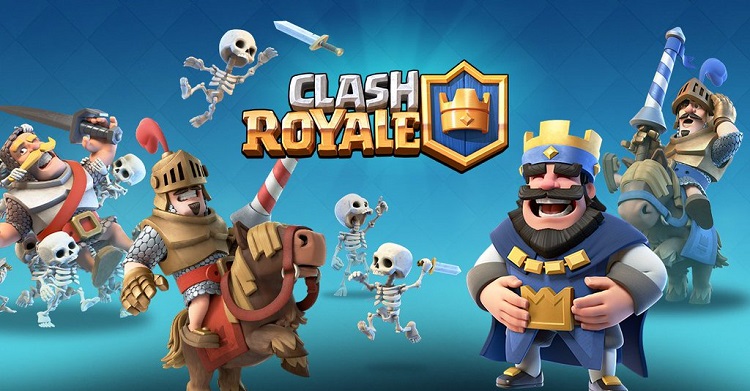Clash Royale is developed by the Finnish mobile game company called Supercell. The name might not ring any bells but the same company is behind a few popular games such as Hay Day and Clash of Clans. In 2012, Supercell was named as the best startup company in the Nordics (Good News from Finland, 2012).
How is this game addictive?
As other mobile games, Clash Royale has a compulsion loop. The loop’s purpose is to hook the player through “a habitual, designed chain of activities that will be repeated to gain a neurochemical reward” (Kim, 2014). Moreover, it is based on the core loop. In Clash Royale, the core loop goes as follows:
- Anticipation: the player has a need to advance in ranking
- Action: play against other players
- Reward: gain a chest which grants resources
The compulsion loop is an extension of this. There are three parts to it, namely habitual, designed chain of activities and neurochemical reward. As the predecessors, Clash of Clans and Hay Day, Clash Royale fosters these loops and gives (or causes) players a reason to come back to the game.
The initial monetization
Clash Royal launched with gem (bought with real money) and gold (bought with gems) packs. The prices of these packages did not vary from the industry average. The game encouraged the player to spend these resources on following objects:
- Gems: opening chests, purchasing, creating tournaments
- Gold: upgrading units, purchasing cards in the shop
Clash Royale is designed in such a way that the player can play the game without any restrictions but at the same time they are not motivated to do so. At any point, a player can be opened one at the time. To advance faster, the player has to spend gems in order to open these chests. This was a main incentive for a player to spend their gems.
After the update
In the September update, Supercell altered Clash Royale’s game modes and monetization. As for modes, the tournament was changed in order to incentive players to use their games and therefore, to spend more money. Previously, the tournaments were available but they were hard to find and participate in. After the rework, player is able to pay a participation price of 10 or100 gems. Moreover, new chests and cards were added. However, the most important update was the addition of packages for purchase. This included several packages which could be purchased either with gold, gems or real money. The packages were modeled as a special offer which lasted 24 hours. Furthermore, these packages returned in case the player did not purchase them before (Clash Royale, 2016).
The impact of this update was immediately visible as Clash Royale climbed the Top Grossing chart by a few positions (Kooistra, 2016). Moreover, the packages were such a huge success that Supercell’s flagship game Clash of Clans implemented them.
Sources
Clash Royale, 2016. Update: New Tournament Mode, Cards & Chests!. [online] Clashroyale.com. Available at: <https://clashroyale.com/blog/release-notes/update-new-tournament-mode-cards-chests> [Accessed 23 Oct. 2016].
Good News From Finland, 2016. Supercell named best startup company in the Nordics – Embassy of Finland, London : News & Current Affairs. [online] Finemb.org.uk. Available at: <http://finemb.org.uk/Public/default.aspx?contentid=265141&nodeid=35864&culture=en-GB> [Accessed 23 Oct. 2016].
Kim, J., 2016. The Compulsion Loop Explained. [online] Gamasutra.com. Available at: <http://www.gamasutra.com/blogs/JosephKim/20140323/213728/The_Compulsion_Loop_Explained.php> [Accessed 23 Oct. 2016].
Kooistra, J., 2016. September’s Top iOS Games: Clash Royale Update Monetizes in US. [online] Newzoo. Available at: <https://newzoo.com/insights/articles/top-ios-games-in-september-clash-royale-finds-new-ways-to-monetize-in-us/> [Accessed 23 Oct. 2016].


